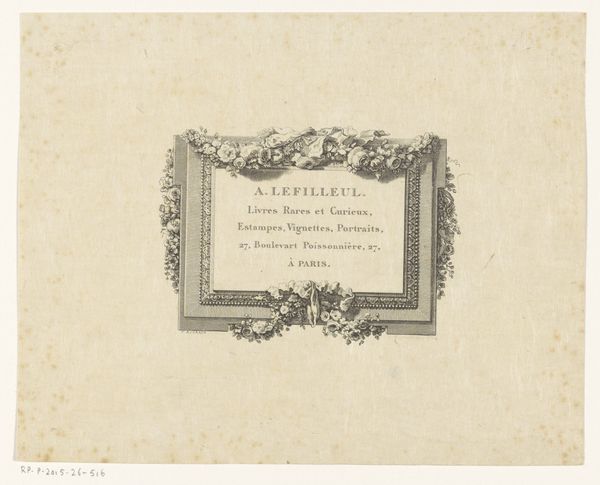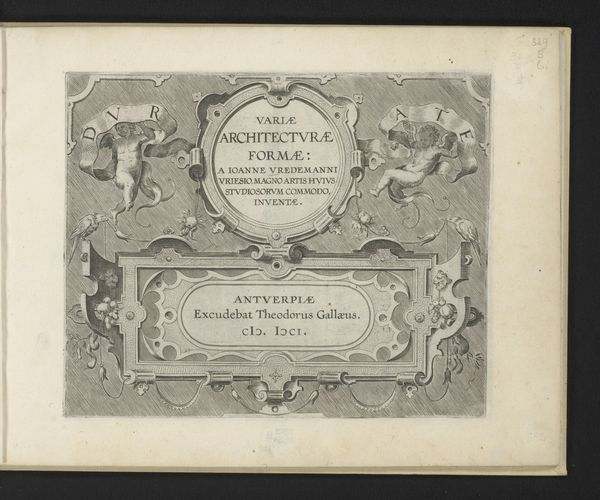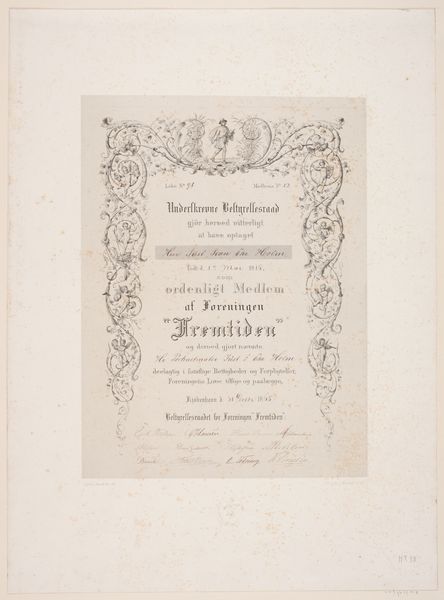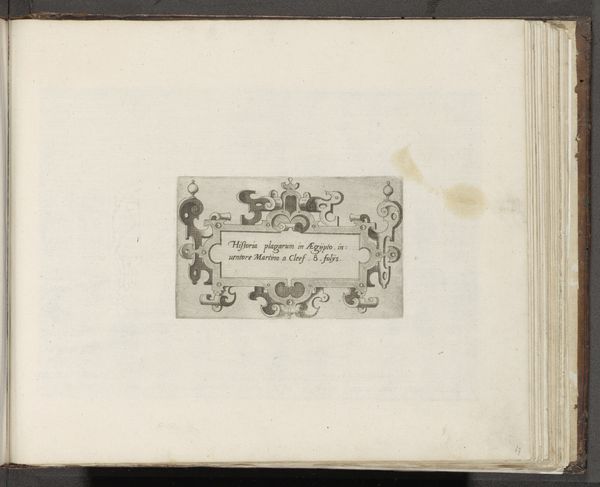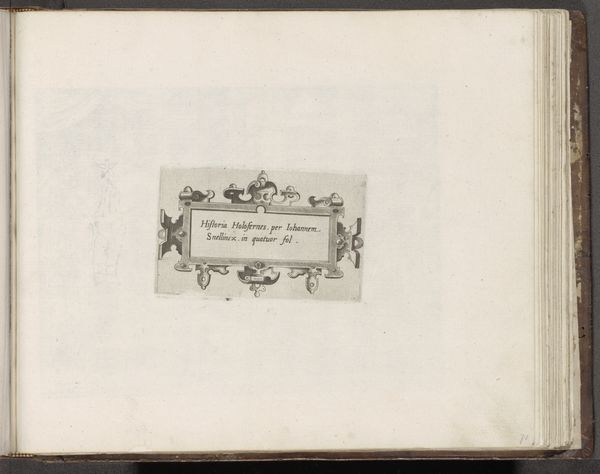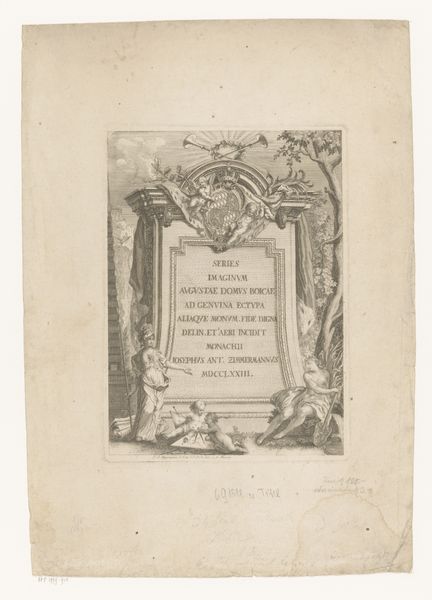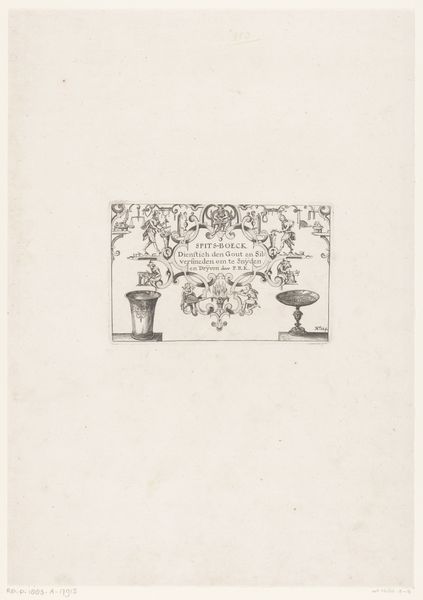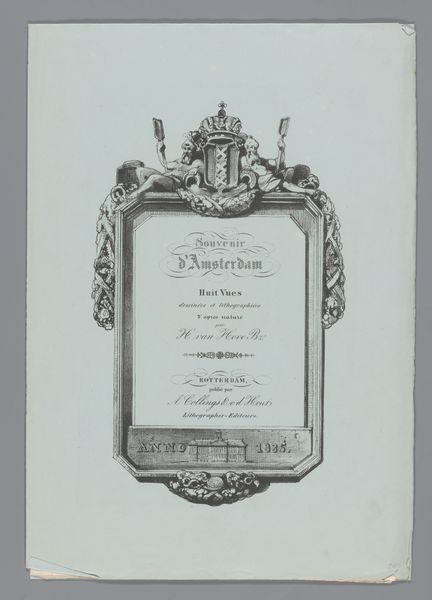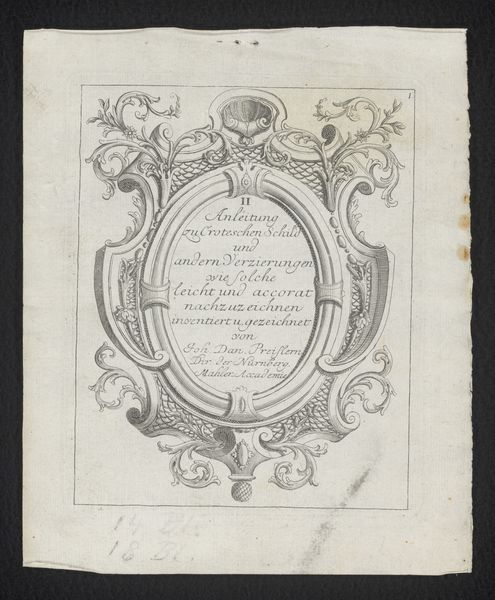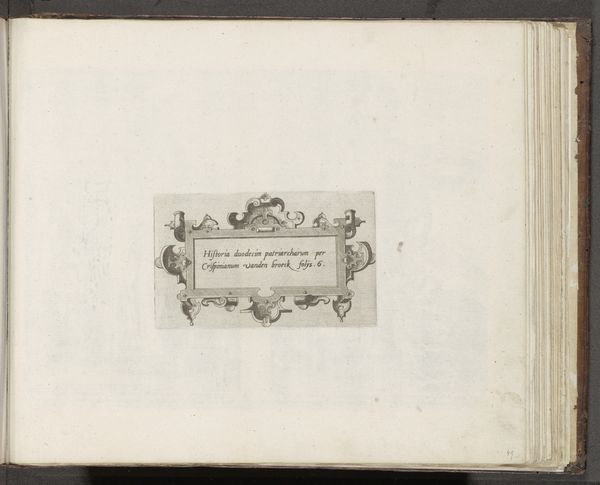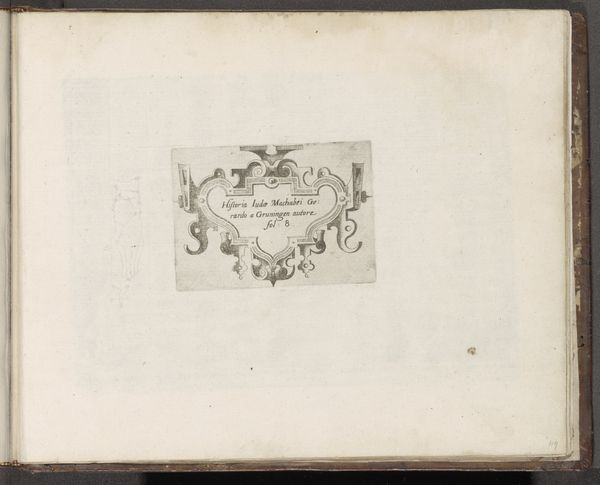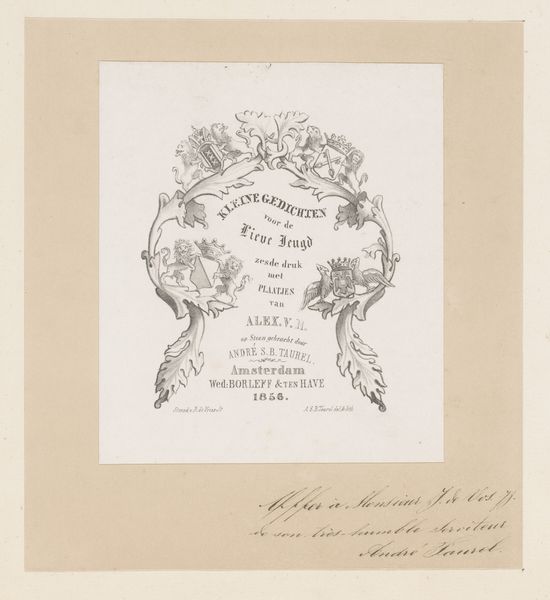
graphic-art, print, etching
#
graphic-art
#
16_19th-century
#
ink paper printed
# print
#
etching
#
academic-art
Dimensions: height 214 mm, width 182 mm
Copyright: Rijks Museum: Open Domain
Curator: Looking at this 1871 print, entitled “Guirlande van bloemen en bladeren rondom tekst,” an etching on paper crafted by Jules Ferdinand Jacquemart, my immediate thought is how incredibly delicate it feels. The wreath design creates a visual border and is so balanced. Editor: The precision is definitely captivating. Yet I find it more than just decorative; the floral frame seems almost like a curated garden around the institutional declaration inside. Inscribed in the frame we find details such as, "The Metropolitan Museum of Art, Etchings of Pictures, Metropolitan Museum, New York", offering us a glimpse into the early promotional materials of one of the world’s most prominent art institutions. What socio-political forces were at play when art began this kind of public role? Curator: Exactly. The print functions as institutional branding but also as an articulation of evolving artistic standards and modes of dissemination during the 19th century. Think of how rapidly photography and printmaking altered art reproduction, allowing institutions like the Met to shape their public identity through readily circulated imagery. Editor: Yes, it becomes a tool. And Jacquemart’s technique is superb. Etching is usually about mark-making; here, the crosshatching and line work build value to suggest dimension and texture, but that tight control reads less artistic expression and more about controlled messaging. How might feminist theories challenge the presumed neutrality of this seemingly simple announcement, framed as an innocuous floral arrangement? Curator: Perhaps we could consider how depictions of nature, especially idealized and controlled forms like floral arrangements, historically correlate with feminine virtues of docility and ornamentation. Is there a subtle enforcement of gendered expectation coded within this aesthetic? How does a decorative art tradition play a role here, and is it intentionally contrasted against other high art forms of painting and sculpture, by design? Editor: And considering access; prints were significantly cheaper and easier to disseminate compared to original paintings or sculptures. Was it a conscious effort on the part of institutions to create an accessible public face while simultaneously solidifying class and aesthetic hierarchies? What intersectional nuances can be highlighted in examining a print like this? Curator: These questions open it up. It’s so interesting how a simple print can reveal such layers of artistic ambition and social dynamics that underlie its production. Editor: Right? It underscores the potential in examining not just the what of art, but also the how and, most importantly, the why.
Comments
No comments
Be the first to comment and join the conversation on the ultimate creative platform.
